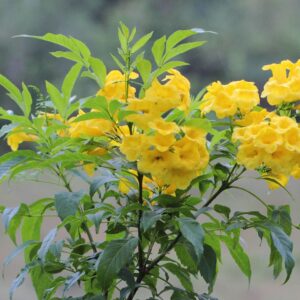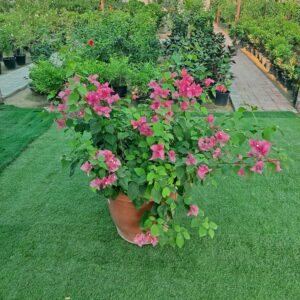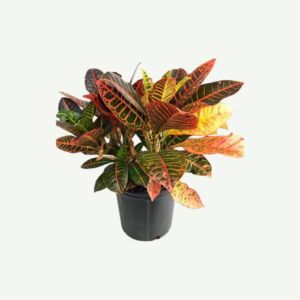Croton is a genus of tropical evergreen shrubs and small trees belonging to the Euphorbiaceae family. These plants are known for their stunning and colorful foliage, making them popular choices for ornamental purposes in gardens and indoor spaces. Croton plants are native to regions in South Asia, Southeast Asia, and the western Pacific Islands.
Landscape Use:
Croton plants are commonly used as ornamental plants in tropical and subtropical gardens and landscapes, adding vibrant colors and texture to garden beds.
Some species and varieties of Croton can be grown indoors as houseplants, adding a tropical touch to interior spaces.
They are also suitable for container gardening on patios, balconies, and decks, where their colorful foliage can create a focal point.
Overall, Croton is a visually appealing and versatile plant that can add a splash of color and vibrancy to gardens, landscapes, and indoor spaces. Its stunning and variegated leaves, coupled with its low-maintenance requirements, make it a popular choice for those seeking a striking and attractive ornamental plant.
Here’s a general description of Croton:
Plant Characteristics:
Leaves: The most striking feature of Croton plants is their variegated and colorful leaves. The leaves come in various shapes, including oval, lance-shaped, or narrow, and they often have serrated edges. The colors of the foliage can range from shades of green, yellow, orange, red, and purple to a combination of these colors, creating eye-catching patterns and contrasts.
Size: Croton plants can vary in size depending on the species and growing conditions. Some species are compact and suitable for growing indoors or in containers, while others can grow into medium-sized shrubs or small trees.
Flowers: While Croton plants are primarily grown for their foliage, they can produce small, inconspicuous flowers in terminal clusters. The flowers are not as showy as the leaves and are typically removed to redirect the plant’s energy toward leaf growth.
Growth Habit: Croton plants have an upright and bushy growth habit. Some species can also be trained into standard or tree-like forms by pruning.
Cultural Requirements:
Sunlight: Croton plants thrive in bright, indirect light. They require several hours of bright light each day to maintain their vibrant foliage color. Avoid exposing them to direct sunlight for prolonged periods, as it may cause leaf burn.
Temperature: Croton plants prefer warm temperatures and are sensitive to cold. They are best suited for tropical and subtropical climates, or they can be grown indoors as houseplants in colder regions.
Soil: These plants prefer well-draining, rich, and fertile soil. A mix of potting soil and perlite is suitable for potted Croton plants, providing good drainage and aeration.
Watering: Croton plants require regular watering to keep the soil consistently moist, but they do not like to sit in waterlogged soil. Allow the top inch of the soil to dry out before watering again.
Humidity: Croton plants appreciate high humidity levels, especially when grown indoors. Regular misting or placing the plant on a humidity tray can help provide the necessary moisture.
Pruning: Pruning can help maintain the shape and size of Croton plants. Pinching off growing tips can encourage bushier growth and more compact plants.






